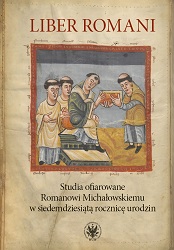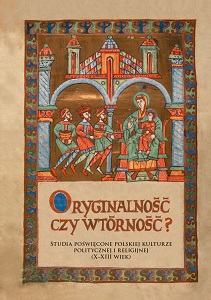
„Kobiety z długimi brodami” kontra „mężczyźni z kobiecymi włosami”, czyli o Origo gentis Langobardorum uwag kilka
An anniversary publication for the renowned medieval historian Professor Roman Michałowski. The articles collected in the volume address the widely understood issues of medieval political and religious culture as well as the history of the Church in that period. Their authors, experts on the Middle Ages, come from Poland and from abroad and are not only historians but also archaeologists.
More...
